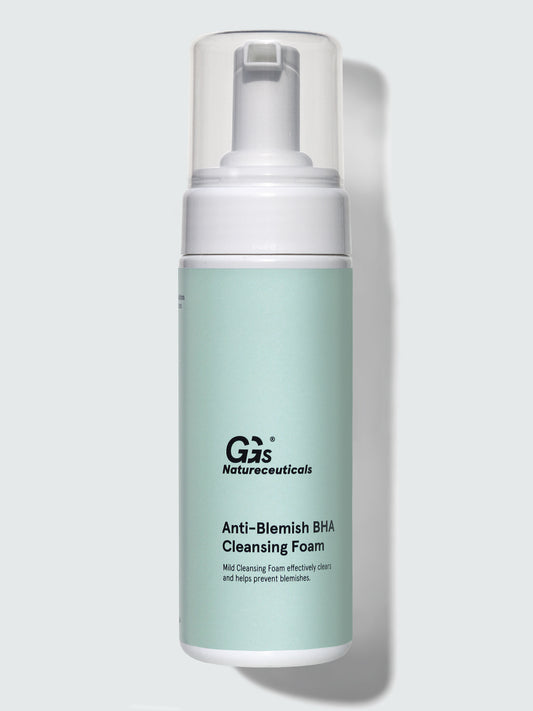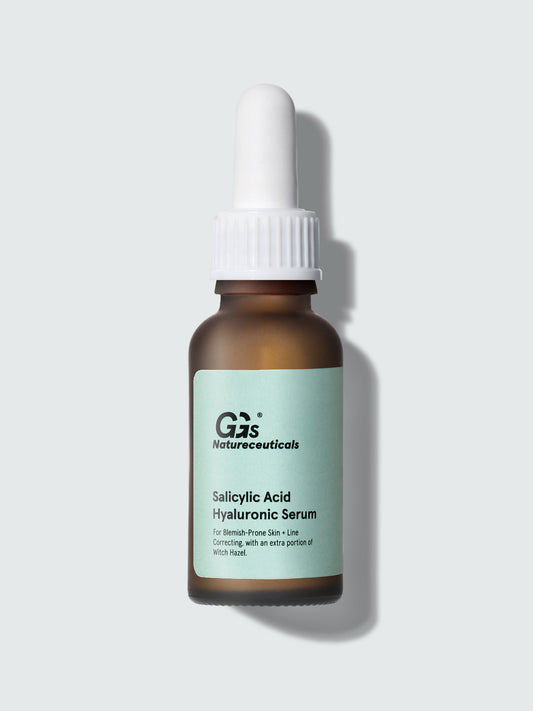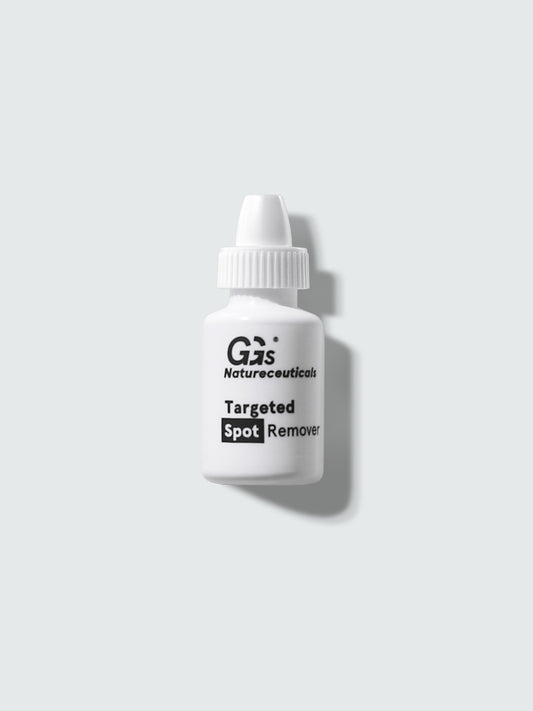|
Skin Condition: Oily or acne-prone skin. Desired Result: Reduced impurities, anti-inflammatory effects. |
Salicylic Acid: A Must-Have for Blemish-Prone Skin
Salicylic acid is a beta-hydroxy acid (BHA). As a chemical peel, it gently dissolves the bonds between cells in the top layer of skin without mechanical action, thus removing dead skin cells and keratinized cells. Since salicylic acid is fat-soluble, it can penetrate well into the skin and dissolve hardened sebum in the pores. Continuous use of salicylic acid therefore combats impurities like pimples and blackheads and also prevents their formation. Salicylic acid clarifies and refines the pores: it leaves the skin soft, smooth, and fresh.
Additionally, salicylic acid resembles body's own compounds that play a role in inflammatory reactions. It has a mild anti-inflammatory effect and can reduce skin irritations. Thus, salicylic acid is suitable for treating inflammatory pimples as well as inflammation-related skin redness. Redness and hyperpigmentation, for example from healing pimples or acne marks, can be diminished in appearance through salicylic acid.

The Effects of Salicylic Acid on the Skin
Which Skin Type is Suitable for Salicylic Acid?
Almost every skin condition can benefit from salicylic acid, but it is particularly suitable for oily or acne-prone skin:
- Oily Skin: Due to its lipophilic (fat-loving) properties, salicylic acid effectively combats oily skin.
- Acne-Prone Skin: In skin prone to acne, salicylic acid prevents pimples, blackheads, and clogged pores.
- Dull Skin: Salicylic acid removes dead skin cells, resulting in a radiant complexion.
- Sensitive Skin: Due to its anti-inflammatory effect, salicylic acid is also recommended for skin prone to redness and sensitivity.
- Inflammatory Skin Reactions: Salicylic acid can have a positive effect on mild rosacea and eczema.
- Keratinization Disorders: Salicylic acid is used in the treatment of psoriasis (scalp psoriasis) or keratosis pilaris (chicken skin).
Salicylic Acid: Which Concentration to Use?
For oily as well as dry skin with impurities, concentrations of 1–2% are effective. For sensitive skin, it is recommended to use lower concentrations (about 0.5–1%). Across the EU, cosmetic preparations are allowed to contain up to 2% salicylic acid, while higher concentrations are found in the medical field. However, these higher concentrations are reserved for medical dermatology, such as in professional chemical peels, and should only be handled by experts.
To achieve optimal keratolytic and peeling effects, salicylic acid products are formulated with an acidic pH (between 3 and 4). If the pH is higher (around 5.5), the anti-inflammatory effect is more pronounced.
Integrating Salicylic Acid into Your Skincare Routine
BHA: Which Product Type to Choose?
Salicylic acid can be incorporated into skincare in the form of cleansing products, serums, or spot treatments. Apply it once daily after or with the cleansing step, either in the morning or evening – depending on the need, skin condition, and skincare product used.
Serums, toners, and lotions can be applied broadly across the entire face (or even other areas like the back or décolleté). Simply put the products into clean hands and spread them on the skin. Liquid exfoliating products can also be applied with Pads, preventing the product from running through the fingers and making it easier to apply. Avoid the delicate area around the eyes.
Additionally, products with high concentrations of salicylic acid (2%) can be used as Spot-Treatment: Apply a generous layer of the product to the areas to be treated, individual pimples, or blackheads, and let it act. The effect of salicylic acid fades after about 2-3 minutes as the cosmetic preparation neutralizes itself. Therefore, the spot treatment doesn't need to be washed off but can remain on the skin – unless otherwise instructed.
How to Start Using BHA?
It is recommended to gradually introduce salicylic acid into your skincare routine to build tolerance and individually test its compatibility: For the first 3 weeks, use the product only twice a week. Then, gradually increase the application, for example, to every other day. Depending on the need and tolerance, salicylic acid can be used up to daily.
Is There an Initial Worsening with Salicylic Acid?
For the keratolytic effect, the pH value of a salicylic acid product must be between 3 and 4. Application may initially irritate the skin and in rare cases worsen the skin condition. However, this initial worsening typically subsides after about 3–4 weeks (one skin cycle), after which the skin condition visibly improves.
To avoid initial worsening and build tolerance to salicylic acid, products should be gradually introduced into the skincare routine, as previously mentioned.
BHA: How to Best Combine It?
Salicylic acid facilitates the penetration of other skincare ingredients into the skin. Depending on the skin type, different combinations are particularly effective:
- Acne-Prone Skin: Alpha-Hydroxy Acids (AHA), such as lactic acid
- Oily Skin: Calming and anti-inflammatory ingredients, like elderflower extract or witch hazel water
- Dry, Flaky Skin: Moisturizing and barrier-stabilizing ingredients, like hyaluronic acid, pyrrolidone carboxylic acid, or lactic acid
- Sensitive Skin: Soothing ingredients, like birch sap or chamomile flower extract
What to Keep in Mind When Using BHA?
As the skin can become more sensitive to light with the use of salicylic acid (BHA), consistent use of sunscreen (at least SPF 30) during the day is essential. Furthermore, individuals who are allergic to aspirin (acetylsalicylic acid) should not use products containing salicylic acid.
Salicylic Acid – Good to Know
As a natural ingredient, it occurs in different plants, such as willow bark (Salix Alba).Salicylic acid is a chemical peel and the most well-known representative of the beta-hydroxy acids (BHAs). Salicylic acid is the only BHA used in cosmetics, which is why it is often equated with the term BHA.





